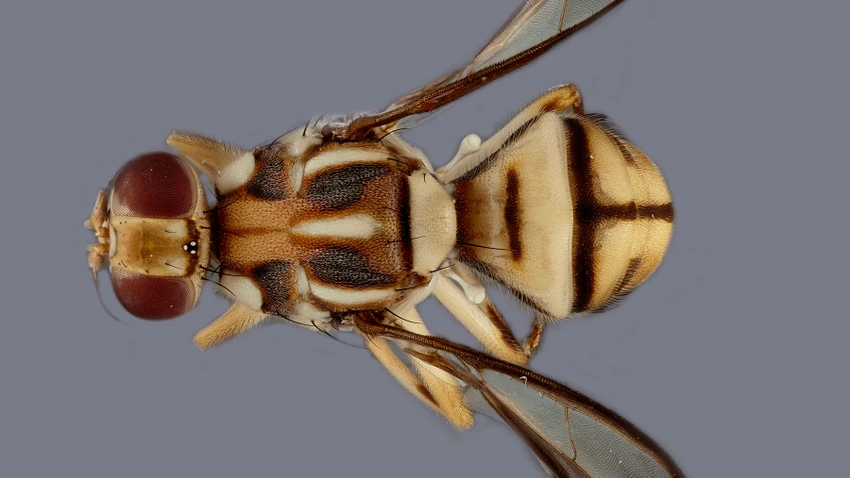Tau fruit fly in California brings quarantine

Over twenty specimens of Tau fruit fly were found in the unincorporated area of Stevenson Ranch, near the city of Santa Clarita, Los Angeles county.
The discovery was confirmed by the California Department of Food and Agriculture (CDFA), with authorities immediately implementing a quarantine area of 79 square miles to prevent further spreading. CDFA first made this announcement in a July 25 press release.
Native to Asia, the Tau fruit fly is extremely detrimental for agriculture and natural resources because of its wide host range, which include numerous fruits and vegetables, as well as other plants native to California.
This is the first time the specimen is confirmed in the Western hemisphere, and it is believed it was introduced by travelers bringing uninspected produce into the state.
Related articles: Fusarium TR4: Colombians say the fungus is “under control”
The CDFA urges residents not to move any fruits and vegetables from their property. They may be consumed or processed at the property where they were picked.
Otherwise, they should be disposed-of by double-bagging in plastic and placing the bags in a bin specifically for garbage.
Additionally, and in cooperation with the United States Department of Agriculture (USDA) and the Los Angeles County Agricultural Commissioner, the CDFA will utilize a multi-tiered approach to eliminate the Tau fruit fly and prevent its spread to new areas.
On properties within 200 meters of detections, staff will cut host fruit and vegetables to inspect for any fruit fly larvae that may be present.
Properties within 200 meters of detections will be treated with a naturally derived organic-approved material known as Spinosad, which will help remove any live adult fruit flies and reduce the density of the population.
Finally, fly traps that incorporate a pheromone lure and a minute amount of pesticide will be used in a wider part of the treatment area.
Featured picture by CDFA.






































